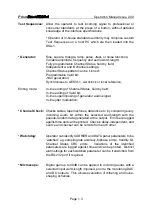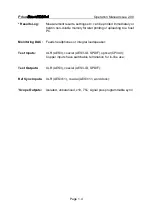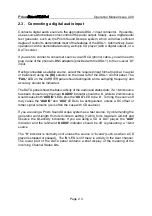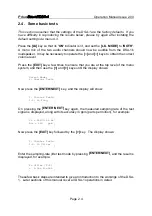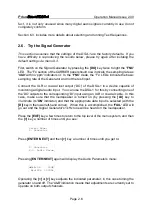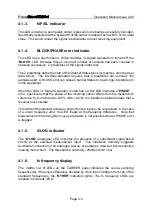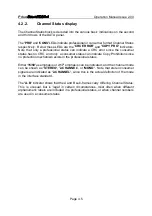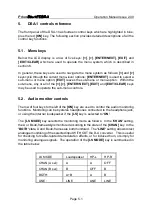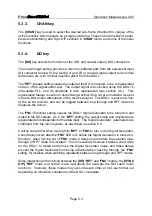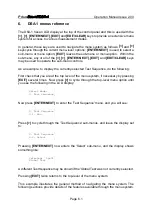
Prism
Operation Manual Issue 2.00
Page 3.4
3.5. Test-out connectors
Two test outputs are provided to assist in the use of an oscilloscope for detailed
examination of the signal-under-test.
An unbalanced version of the signal at the selected DI connector (including the optical
connector) is routed to the LINE test-out connector, thus providing a convenient means
of viewing the received signal without unbalancing, misterminating or otherwise
upsetting the line. For best bandwidth and accuracy, the LINE test output is designed
to drive a 75
6
termination at the oscilloscope and, under this condition, an attenuation
of 10x results similarly to the case of a high-frequency oscilloscope probe. In many
instances the termination may be omitted in which case a 5x attenuation occurs at the
output.
The SYNC test-output provides a signal designed to be used as a trigger for the
oscilloscope. It drives a pulse of arbitrary amplitude and duration, whose rising edge
is timed just prior to the start of the selected preamble of the signal-under-test (or the
Signal Generator reference if it is switched on). The [SYNC O/P] key is used to select
whether the SYNC test-output is derived from the X, Y or Z preamble of the signal-
under-test, or from the REF SYNC input. For best results, the SYNC test-output should
also be terminated with 75
6
at the oscilloscope. Note that various interlocks operate
on the [SYNC O/P] selection, for example accessing the 'Ref Learn' or Jitter
measurement menus or using the Signal Generator may preclude the use of certain
settings.
NOTE: Both the LINE and SYNC test outputs are electrically isolated from the DI and
measurement circuitry so that results are not compromised by an unwanted ground
connection to the oscilloscope.

